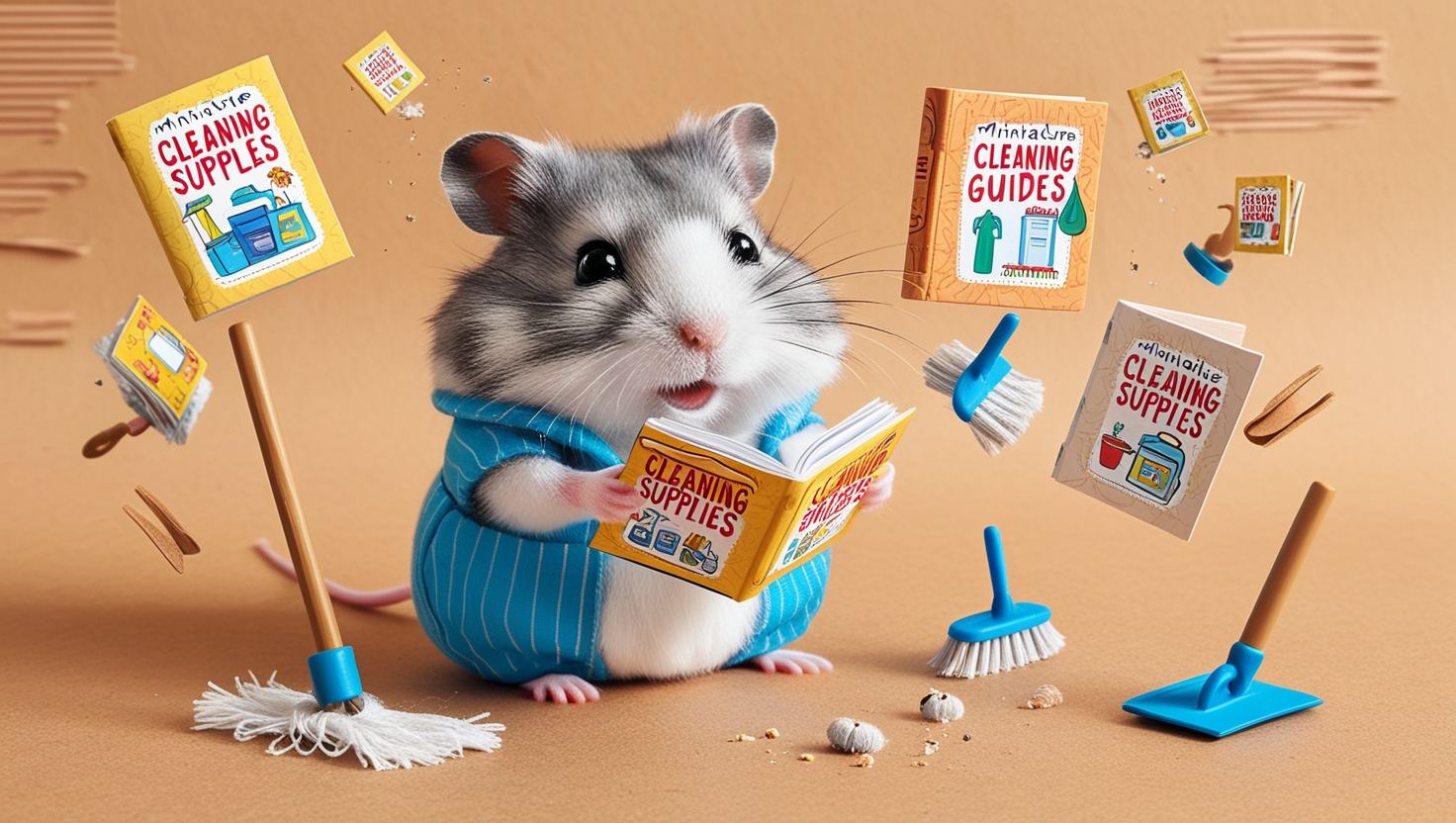Hamster Care: How to take care of hamsters

7. A clean and tidy hamster home
Your new friend will groom themselves, but it’s up to you to make sure that you keep your hamster’s cage clean. To make this easier you can train your new hamster to use a damp corner. Put some of their damp wood shavings into a little plastic tray and put it in one corner of the cage. Your hamster will smell the urine and go to the spot every time they need to pee. This makes your life a lot easier as you are not having to constantly change the bedding or shavings in the cage.
- Choosing a type of hamster
- Buying your hamster
- Your hamster’s home
- Feeding your hamster
- Getting to know your hamster
- Exercise
- Cleaning
- Health problems

Each day: Make sure that your pet’s food and water are changed. You should also shake the bedding or shavings, and make sure any droppings are removed from the cage.
Once a week: Give your hamster’s cage a full clean from top to bottom. Though leave a small amount of the old bedding in place so that the hamster recognises some familiar smells when it returns to the cage.
While you are cleaning, you need to make sure that your pet is secure and cannot escape. If you purchased a small animal carrier when you first bought your pet, you can put them in this while you clean the cage.
It’s not a good idea to put them in a hamster ball unless there is someone else there who can watch them. You can’t concentrate on cleaning the cage and keep an eye on your hamster’s ball manoeuvring skills at the same time.
- Choosing a type of hamster
- Buying your hamster
- Your hamster’s home
- Feeding your hamster
- Getting to know your hamster
- Exercise
- Cleaning
- Health problems

Keeping Your Hamster Clean: FAQs
While hamsters are relatively clean animals, they still need your help to stay fresh and healthy. Here are some frequently asked questions about hamster hygiene:
Do hamsters need baths?
Generally, no. Bathing hamsters with water is not recommended as it can be stressful and strip away essential oils from their fur. Hamsters are very good at grooming themselves.
What if my hamster gets something sticky or dirty on their fur?
If your hamster gets into something messy, you can try these options:
Spot Cleaning: Use a damp cloth or unscented baby wipes to gently clean the affected area. Avoid getting their face or head wet.
Dust Bath: Offer a shallow dish filled with chinchilla dust (not regular dust!). Hamsters will roll around in it, allowing the dust to absorb dirt and excess oils.
How often should I clean my hamster’s cage?
Cage cleaning frequency depends on the cage size and your hamster’s habits:
Spot Cleaning: Remove soiled bedding, uneaten fresh food, and droppings daily.
Full Cleaning: Replace all bedding, wipe down surfaces with pet-safe disinfectant, and wash accessories weekly or more often if needed (e.g., if the cage smells strongly or is excessively soiled).
What’s the best way to clean my hamster’s cage?
Follow these steps:
Remove Your Hamster: Place your hamster in a safe, secure location like a carrier or playpen.
Discard Bedding and Waste: Empty the cage completely, disposing of soiled bedding and waste.
Wash and Disinfect: Using hot, soapy water, thoroughly clean the cage, water bottle, food dish, and any other accessories. Rinse well and disinfect with a pet-safe disinfectant. Allow everything to dry completely before reassembling.
Replace Bedding: Add fresh bedding to a depth of at least 6 inches.
Return Your Hamster: Place your hamster back in their clean home.
What kind of cleaner is safe for hamster cages?
Use a pet-safe disinfectant or a vinegar solution (1 part white vinegar to 3 parts water). Avoid harsh chemicals, bleach, or strong-smelling cleaners that can harm your hamster’s respiratory system.
Do I need to clean my hamster’s toys?
Yes, regularly clean your hamster’s toys to prevent bacteria buildup.
Wooden Toys: Wipe down with a damp cloth and allow to air dry.
Plastic Toys: Wash with hot, soapy water and disinfect with a pet-safe solution.
Cardboard Toys: These are best replaced regularly as they can harbor bacteria.
How can I encourage my hamster to keep itself clean?
Provide a Dust Bath: Offer a shallow dish with chinchilla dust a couple of times a week to help absorb excess oils and keep their fur clean.
Offer Chew Toys: Gnawing on safe chew toys helps keep their teeth clean and trimmed.
By following these guidelines and maintaining a clean environment, you can help your hamster stay healthy and thrive!
